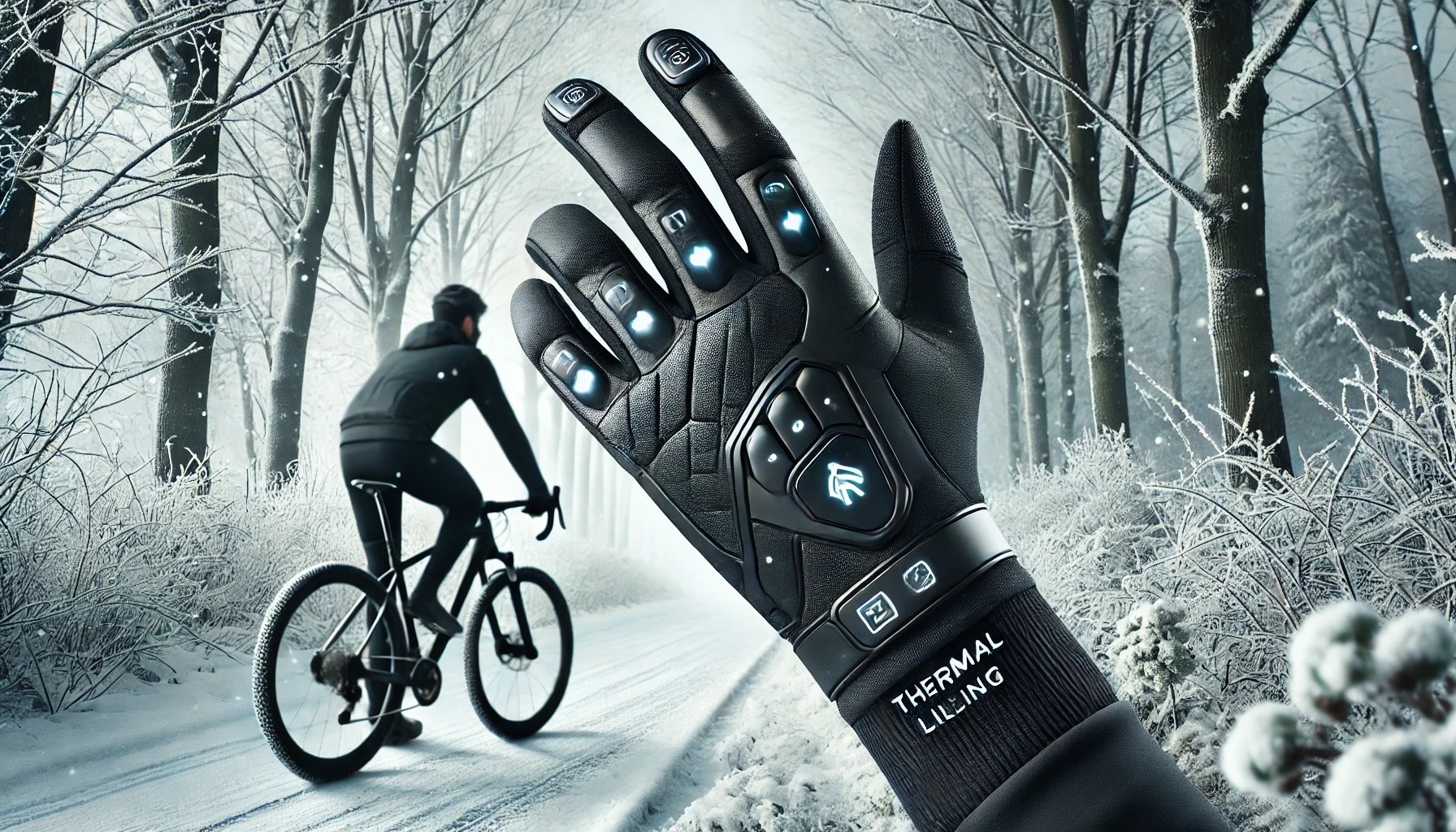How AI Can Revolutionize Comfort and Warmth
Winter cycling is a rewarding yet challenging endeavor. For many cyclists, cold hands are a recurring frustration that can turn a joyful ride into a miserable experience. While winter cycling gloves have evolved with materials like neoprene, thermal linings, and windproof shells, many riders still struggle to find gloves that truly work. Here’s how artificial intelligence (AI) could change the game by creating smarter, more effective solutions for winter cycling gloves. Learn more here.
The Challenges of Winter Cycling Gloves
- Limited Insulation in Extreme Conditions Many gloves boast insulation, but they often fail to maintain warmth during long rides in freezing temperatures. Heat retention is affected by sweat, wind exposure, and the inability of current materials to adapt dynamically to changing conditions.
- Loss of Dexterity Bulky gloves often hinder cyclists’ ability to shift gears, brake, or use touchscreens. Finding the balance between warmth and functionality remains a common issue.
- Sweat and Moisture Management Gloves that trap sweat can lead to damp hands, which cool down quickly, making the ride even more uncomfortable.
- One-Size-Fits-All Approach Current gloves rarely account for individual differences like hand circulation, activity levels, and ride duration, leaving some cyclists more vulnerable to the cold than others.
How AI Can Revolutionize Winter Cycling Gloves
1. AI-Optimized Materials
AI-driven material science can analyze vast datasets to design fabrics that provide superior insulation while remaining lightweight and breathable. By leveraging predictive algorithms, manufacturers can create gloves tailored to withstand specific weather conditions and riding intensities.
2. Personalized Fit and Thermal Regulation
Using sensors and machine learning, gloves could adapt dynamically to a rider’s hand temperature. For instance, integrated AI could:
- Monitor hand temperature in real-time.
- Activate heating elements in colder areas.
- Adjust insulation levels based on activity (e.g., more warmth during descents and less during climbs).
3. Enhanced Moisture Management
AI could incorporate advanced moisture-wicking systems that adapt to sweat levels. Machine learning algorithms would analyze data to optimize airflow and prevent moisture buildup, keeping hands warm and dry.
4. Smart Connectivity
AI-powered gloves could connect to smartphones or cycling computers, enabling riders to:
- Adjust heating levels through an app.
- Receive real-time weather updates and glove performance insights.
- Track metrics like hand temperature, ride duration, and energy consumption of heating elements.
5. Predictive Design for Specific Users
AI could create highly customized gloves by analyzing individual user data, such as:
- Circulation issues or medical conditions.
- Riding habits and average ride durations.
- Typical weather conditions in the rider’s location. This data-driven approach would ensure gloves meet the unique needs of every cyclist.
The Future of Winter Cycling Gear
AI-Driven Recommendations
In addition to designing better gloves, AI could assist cyclists in choosing the best products. Platforms could analyze reviews, weather patterns, and personal preferences to recommend the ideal winter cycling gloves for each rider.
Integration with Other Winter Cycling Gear
AI technology could extend to jackets, shoe covers, and base layers, creating a fully integrated winter cycling system. These connected products could work in harmony, ensuring optimal warmth and comfort from head to toe.
A Call to Action
The cold hands problem isn’t just about discomfort; it’s about safety and enjoyment. By leveraging AI, the cycling industry has an opportunity to transform winter gear and make cycling in harsh conditions accessible and enjoyable for everyone.
Cyclists, innovators, and manufacturers—what do you think? Is AI the solution to creating the ultimate winter cycling gloves? Share your thoughts, and let’s keep the conversation (and our hands) warm this winter!
